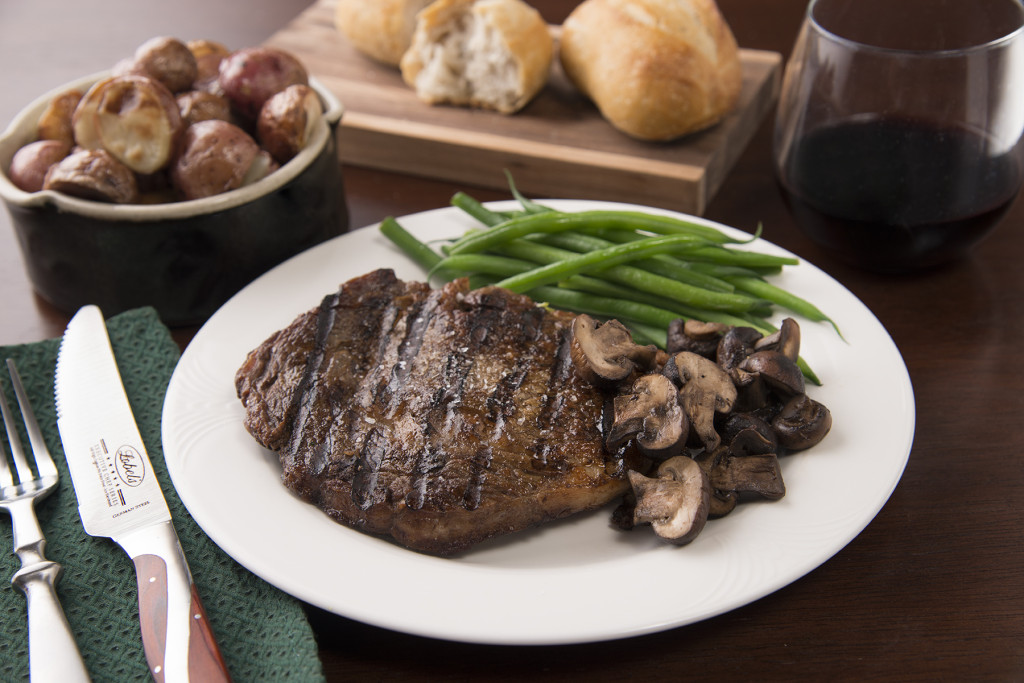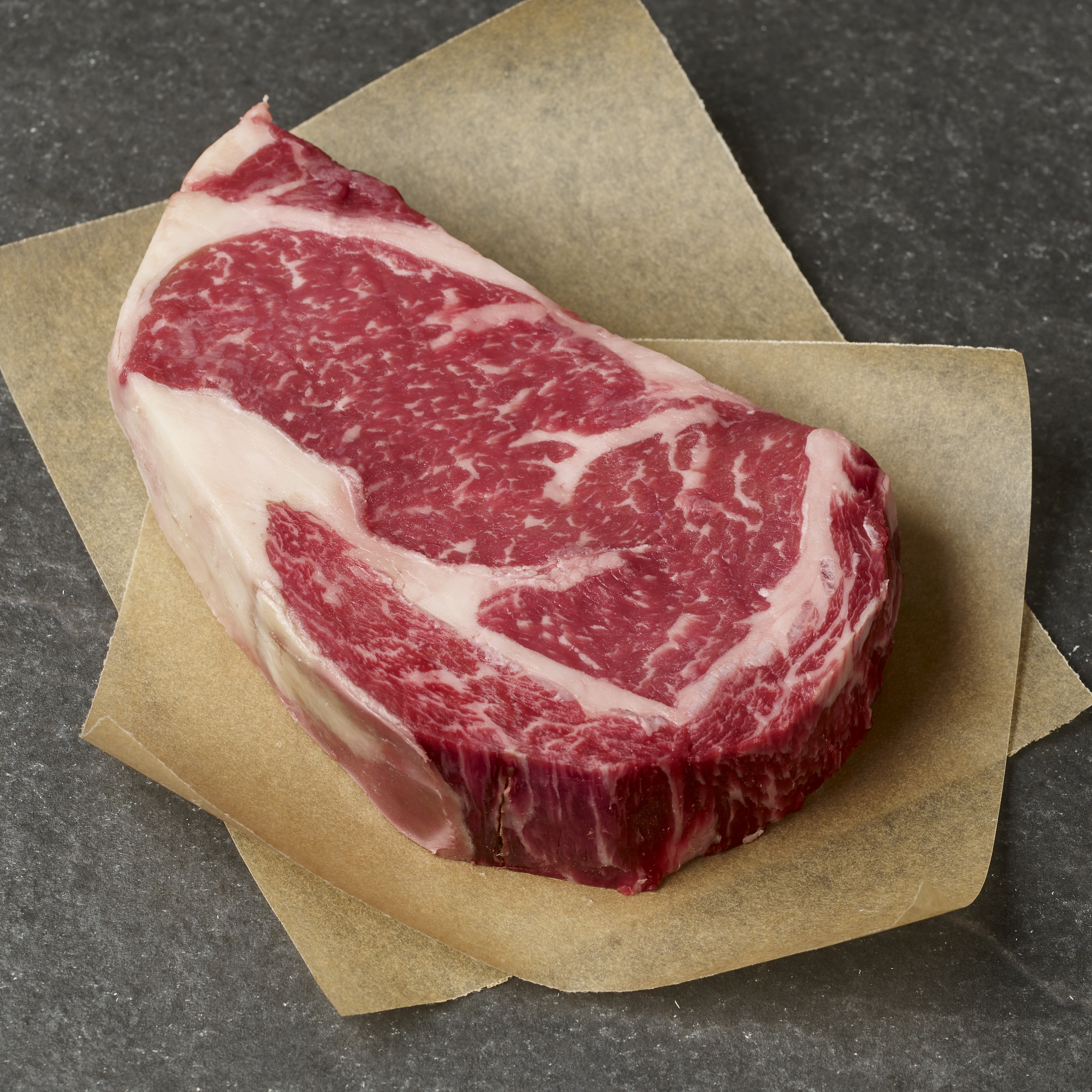The Lobel family of Lobel’s Prime Meats in Manhattan and Lobel’s of New York online butcher shop are fourth- and fifth-generation butchers. With our Cut of the Month series, we will bring you their wealth of knowledge and expertise on specific cuts of meat, including their unique characteristics, preparation methods, and how to select the best cut.
Rib steaks have long been ranked the most popular steak for grilling. Since Grilling Season is just getting started in most of the country, we’ve selected boneless rib steak as this month’s Cut of the Month.

Selecting Boneless Rib Steaks
We love beef, which puts us in good company. Most meat eaters favor it. Let’s face it–few things beat a thick steak and a glass of red wine.
American beef producers say that nearly 40 percent of all meat and poultry sold in the United States is beef. Clearly, as a nation we love our beef. With so much beef being marketed, and with its price so high, we believe it’s only fair that consumers know what to look for when they buy it.
Making the Grade
Beef is graded by the USDA before it gets to the wholesaler. Most is graded prime, choice, or select. The grade is based on the marbling and the approximate age of the animal from which it came. Most purveyors select prime or choice meat, with choice being the most commonly sold. Select beef, which has less marbling than choice, is also available. Even within a graded category variations exist.
We buy only prime beef for our shop and for our customers. At the wholesale level, we might examine 100 sides of beef graded as USDA prime and will choose only two or three for Lobel’s. Admittedly, we are picky, picky, picky, particularly when you consider that less than 2 percent of all the beef produced in this country falls into the prime category. What might be very good prime beef, as graded by the USDA, is not necessarily good enough for our customers. Over the years, we have all developed an eye for outstanding beef, and rarely are we wrong.
For more information about grades of beef, watch as Mark Lobel shows you in this video:
Marbling
Look for meat with a minimum of outer creamy white fat and soft-looking bones with red coloration. In a boneless rib steak, pay particular attention to the color of the fat cap–this is the band of fat that curves around the outer edge of the steak, surrounded by a narrow band of meat called the rib cap.
Avoid steaks with excessively heavy marbling (thick ropes of fat) or no marbling at all. Inexperienced meat buyers are drawn to bright red slices of beef without any visible fat, but this is a mistake. The fat gives the meat flavor and moisture. On the other hand, the fat should never be yellowed and the meat should never be two-toned, or have a deep, dark red color or a coarse texture.
The meat should be firm, fine textured, and, in most instances, a light cherry red. The best steaks will have a delicate marbling, called fine-needle marbling, or graining that runs through the meat like a web. The marbled fat is a lubricant that dissolves as the meat cooks to give it that distinctive flavor and texture we all love so much in a good steak. Fine, uniformly marbled fat melts evenly and leaves meat juicy and tender. Conversely, chunky ropes of fat don’t melt at the same rate as the meat cooks and will leave it tough and tasting fatty.
Aging
We age prime beef at Lobel’s. Most good butchers age meat, although what you buy in the supermarket arrives a bare six to ten days after slaughter. We hang the beef in our coolers, which are maintained at 34º to 36º F, for four to six weeks after we purchase it, until it reaches what we consider perfection. Our customers expect and appreciate this quality.

About Boneless Rib Steaks
Rib steaks, also known as prime ribs, are cut from the rib section in the forequarter of the steer which lies between the shoulder (chuck) and the loin and hindquarter. Typically, rib steaks cut from the chuck end will have a bigger cap and smaller eye and have a thicker fat cap. Those cut from the loin end usually have a larger eye, smaller cap and thinner fat cap in between.
They are usually cut to be 1 or 2 inches thick and have excellent flavor; when well cooked, they have a pleasing texture, although they are not the most tender beef. As with all steaks, grade will affect the eating experience.
When the bone is removed from the rib steak, you are left with a boneless rib steak. The round portion of meat in a rib steak is referred to as the “eye,” so a boneless rib steak is often called a rib-eye steak or–more simply–a rib-eye.
For more information about the rib section of the steer and the term “prime rib,” watch this video from Stanley Lobel:
Rib Steak Recipes
A rib steak can be prepared in the same manner as any other steak. It is fantastic when grilled. Try it using our simple, master technique for grilling the perfect steak.
You can also try substituting rib steak for strip steak in one of these recipes:
New York Strip Steak with Horseradish-Mint Glaze
Is rib steak your favorite steak or among your favorites? What’s your favorite way to prepare rib steak?



Leave Your Response